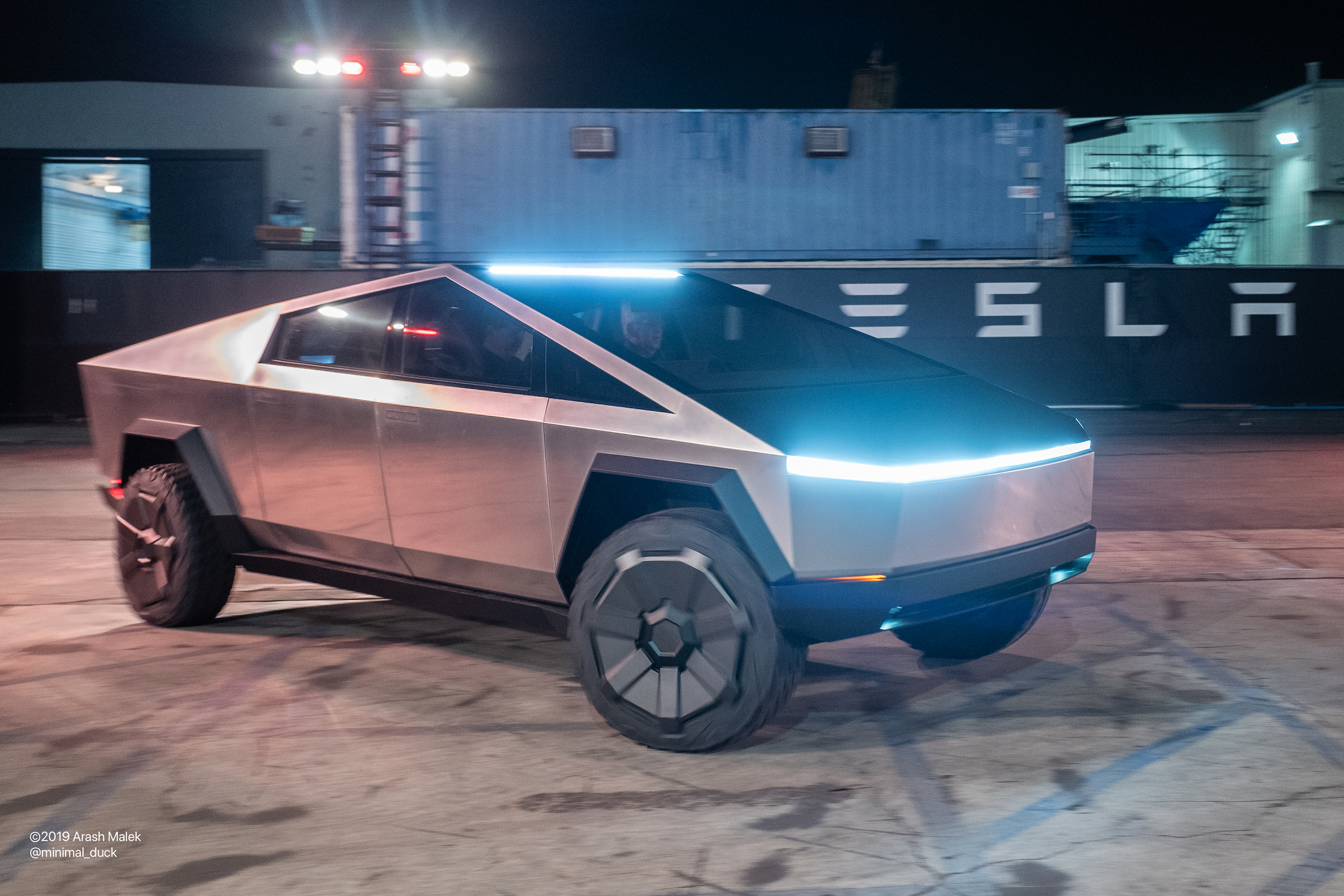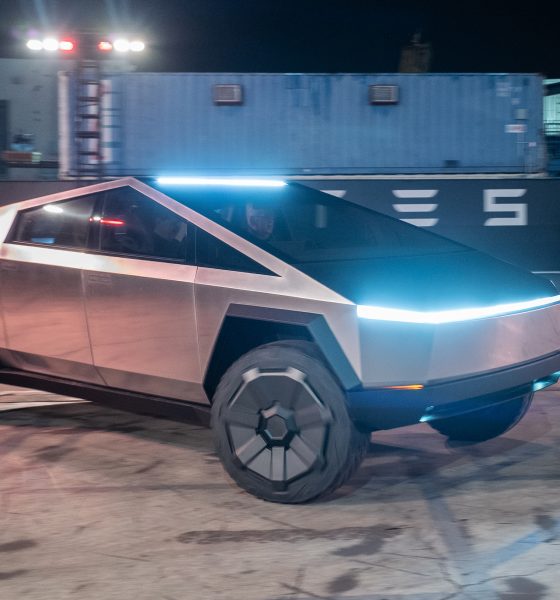

Investor's Corner
Tesla’s biggest bear sets Q3 delivery forecast at 223k
Tesla’s (NASDAQ: TSLA) biggest bear is, without a doubt, Gordon Johnson of GLJ Research. Johnson has been the most outspoken critic of the electric automaker for several years, holding extremely low price targets and never shying away from his very public sell rating. Earlier today, GLJ Research released its Q3 2021 delivery forecast at 223,000 vehicles, which is slightly above consensus estimates.
Johnson set his target for Q3 deliveries at 223,000 cars, which would be slightly more than a 10% increase in deliveries compared to Q2 2021. Tesla delivered 201,250 electric cars in Q2, despite global supply chain and logistics challenges. 99% of the deliveries comprised the Model 3 and Model Y, as the Model S Plaid was just beginning deliveries, and the Model X has been pushed back to 2022 for most orderers.
Compared to other analysts, Johnson’s prediction is relatively in line, with the exception of some bullish $TSLA analysts who have slated Q3 deliveries at a slightly higher than consensus estimate. For example, Piper Sandler and RBC Capital Markets raised their forecasts for Q3 to about 233,000 vehicles, insinuating an over 14% growth in deliveries for the electric automaker compared to Q2. Piper Sandler analyst Alex Potter stated that the firm believes Q3 will be Tesla’s strongest-ever quarter, increasing its 2021 Full Year outlook for the company from 846,000 to 894,000.
Tesla (TSLA) gets upbeat estimates from Wall St amid “strongest ever” quarter
Johnson’s past synopsis for Tesla has been that the automaker has no advantage in batteries, their sales are declining, and in EV-heavy regions like Norway, the company has been dominated by automakers like Volkswagen. In fact, Tesla’s battery advantage has been outlined in several ways, especially in its ability to steer clear of parts shortages. Batteries are likely the biggest bottleneck presented to Tesla, as it has inhibited the company from expanding its product line with vehicles like the Semi and the next-gen Roadster. However, the available batteries are being funneled to Tesla’s mass-market Model 3 and Model Y, as well as the Model S, which only accounts for a few thousand Tesla sales every quarter.
While battery constraints have halted Tesla’s launch of the Semi and Roadster programs, they have surged the automaker to have the notorious reputation of having the longest-range EVs on the market currently. While Lucid has overtaken Tesla in range ratings from the EPA, Lucid has not yet launched a vehicle, although deliveries are expected to begin later this year.
In terms of Johnson’s claim that Tesla sales are declining, this is not accurate. Tesla has not seen a decline in delivery statistics since Q1 2019, when the automaker delivered approximately 63,000 cars. In Q4 2018, Tesla delivered 90,300 vehicles. Since then, Tesla has seen consistent increases in delivery statistics.
Finally, Norway has been a hotspot of Tesla’s, unlike Johnson’s claims of domination by other companies. In August, Tesla overtook Volkswagen and Ford in the region. Norway has among the highest concentration of EV drivers globally, and the final ICE sale is expected to take place in mid-2022, according to recent projections.
Johnson is ranked 7,420 out of 7,671 analysts on TipRanks. He has a $67 price target on TSLA with a “Sell” rating, an average return of -7.1%, and a success rate of 54%.
At the time of writing, TSLA was down 1.55% at $779.05.
Disclosure: Joey Klender is a TSLA Shareholder.
Don’t hesitate to contact us with tips! Email us at tips@teslarati.com, or you can email me directly at joey@teslarati.com.

Investor's Corner
Tesla stock closes at all-time high on heels of Robotaxi progress

Tesla stock (NASDAQ: TSLA) closed at an all-time high on Tuesday, jumping over 3 percent during the day and finishing at $489.88.
The price beats the previous record close, which was $479.86.
Shares have had a crazy year, dipping more than 40 percent from the start of the year. The stock then started to recover once again around late April, when its price started to climb back up from the low $200 level.
This week, Tesla started to climb toward its highest levels ever, as it was revealed on Sunday that the company was testing driverless Robotaxis in Austin. The spike in value pushed the company’s valuation to $1.63 trillion.
Tesla Robotaxi goes driverless as Musk confirms Safety Monitor removal testing
It is the seventh-most valuable company on the market currently, trailing Nvidia, Apple, Alphabet (Google), Microsoft, Amazon, and Meta.
Shares closed up $14.57 today, up over 3 percent.
The stock has gone through a lot this year, as previously mentioned. Shares tumbled in Q1 due to CEO Elon Musk’s involvement with the Department of Government Efficiency (DOGE), which pulled his attention away from his companies and left a major overhang on their valuations.
However, things started to rebound halfway through the year, and as the government started to phase out the $7,500 tax credit, demand spiked as consumers tried to take advantage of it.
Q3 deliveries were the highest in company history, and Tesla responded to the loss of the tax credit with the launch of the Model 3 and Model Y Standard.
Additionally, analysts have announced high expectations this week for the company on Wall Street as Robotaxi continues to be the focus. With autonomy within Tesla’s sights, things are moving in the direction of Robotaxi being a major catalyst for growth on the Street in the coming year.
Elon Musk
Tesla needs to come through on this one Robotaxi metric, analyst says
“We think the key focus from here will be how fast Tesla can scale driverless operations (including if Tesla’s approach to software/hardware allows it to scale significantly faster than competitors, as the company has argued), and on profitability.”

Tesla needs to come through on this one Robotaxi metric, Mark Delaney of Goldman Sachs says.
Tesla is in the process of rolling out its Robotaxi platform to areas outside of Austin and the California Bay Area. It has plans to launch in five additional cities, including Houston, Dallas, Miami, Las Vegas, and Phoenix.
However, the company’s expansion is not what the focus needs to be, according to Delaney. It’s the speed of deployment.
The analyst said:
“We think the key focus from here will be how fast Tesla can scale driverless operations (including if Tesla’s approach to software/hardware allows it to scale significantly faster than competitors, as the company has argued), and on profitability.”
Profitability will come as the Robotaxi fleet expands. Making that money will be dependent on when Tesla can initiate rides in more areas, giving more customers access to the program.
There are some additional things that the company needs to make happen ahead of the major Robotaxi expansion, one of those things is launching driverless rides in Austin, the first city in which it launched the program.
This week, Tesla started testing driverless Robotaxi rides in Austin, as two different Model Y units were spotted with no occupants, a huge step in the company’s plans for the ride-sharing platform.
Tesla Robotaxi goes driverless as Musk confirms Safety Monitor removal testing
CEO Elon Musk has been hoping to remove Safety Monitors from Robotaxis in Austin for several months, first mentioning the plan to have them out by the end of 2025 in September. He confirmed on Sunday that Tesla had officially removed vehicle occupants and started testing truly unsupervised rides.
Although Safety Monitors in Austin have been sitting in the passenger’s seat, they have still had the ability to override things in case of an emergency. After all, the ultimate goal was safety and avoiding any accidents or injuries.
Goldman Sachs reiterated its ‘Neutral’ rating and its $400 price target. Delaney said, “Tesla is making progress with its autonomous technology,” and recent developments make it evident that this is true.
Investor's Corner
Tesla gets bold Robotaxi prediction from Wall Street firm
Last week, Andrew Percoco took over Tesla analysis for Morgan Stanley from Adam Jonas, who covered the stock for years. Percoco seems to be less optimistic and bullish on Tesla shares, while still being fair and balanced in his analysis.

Tesla (NASDAQ: TSLA) received a bold Robotaxi prediction from Morgan Stanley, which anticipates a dramatic increase in the size of the company’s autonomous ride-hailing suite in the coming years.
Last week, Andrew Percoco took over Tesla analysis for Morgan Stanley from Adam Jonas, who covered the stock for years. Percoco seems to be less optimistic and bullish on Tesla shares, while still being fair and balanced in his analysis.
Percoco dug into the Robotaxi fleet and its expansion in the coming years in his latest note, released on Tuesday. The firm expects Tesla to increase the Robotaxi fleet size to 1,000 vehicles in 2026. However, that’s small-scale compared to what they expect from Tesla in a decade.
Tesla expands Robotaxi app access once again, this time on a global scale
By 2035, Morgan Stanley believes there will be one million Robotaxis on the road across multiple cities, a major jump and a considerable fleet size. We assume this means the fleet of vehicles Tesla will operate internally, and not including passenger-owned vehicles that could be added through software updates.
He also listed three specific catalysts that investors should pay attention to, as these will represent the company being on track to achieve its Robotaxi dreams:
- Opening Robotaxi to the public without a Safety Monitor. Timing is unclear, but it appears that Tesla is getting closer by the day.
- Improvement in safety metrics without the Safety Monitor. Tesla’s ability to improve its safety metrics as it scales miles driven without the Safety Monitor is imperative as it looks to scale in new states and cities in 2026.
- Cybercab start of production, targeted for April 2026. Tesla’s Cybercab is a purpose-built vehicle (no steering wheel or pedals, only two seats) that is expected to be produced through its state-of-the-art unboxed manufacturing process, offering further cost reductions and thus accelerating adoption over time.
Robotaxi stands to be one of Tesla’s most significant revenue contributors, especially as the company plans to continue expanding its ride-hailing service across the world in the coming years.
Its current deployment strategy is controlled and conservative to avoid any drastic and potentially program-ruining incidents.
So far, the program, which is active in Austin and the California Bay Area, has been widely successful.








